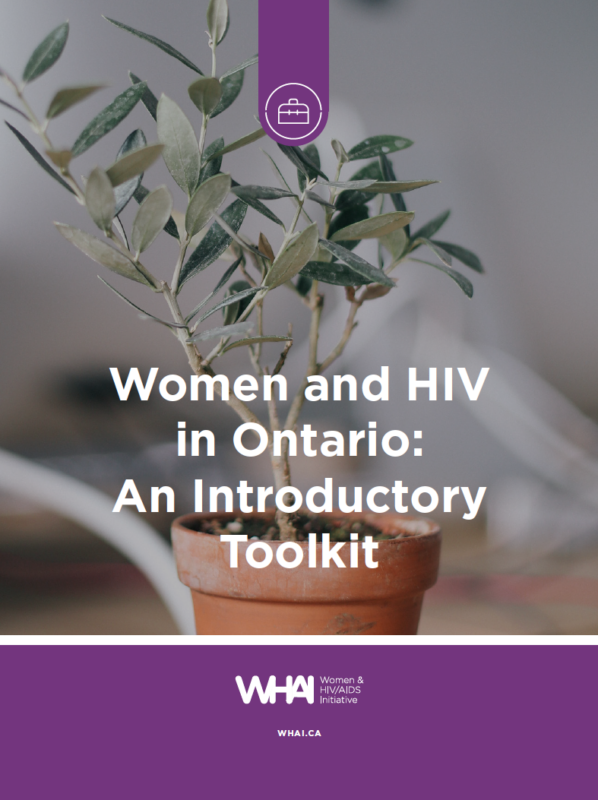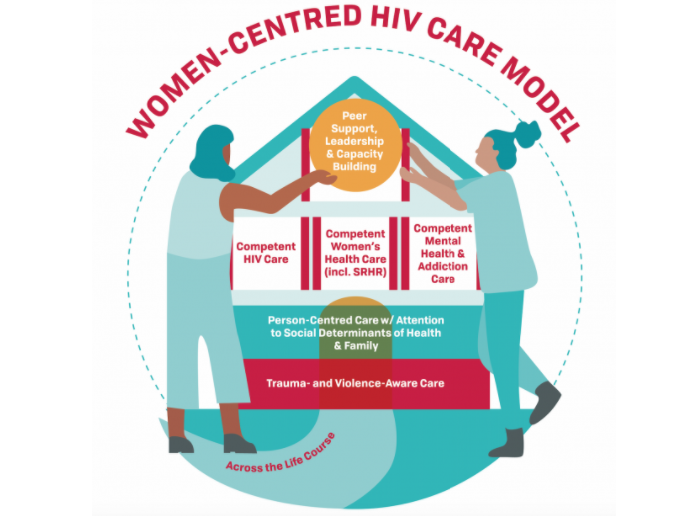HIV Treatment & Care for Women
With thoughtful, wholistic and inclusive treatment, HIV is a chronic and manageable disease.
How is HIV Treated?
Having access to thoughtful, wholistic, and person-centred care and support is a critical part of the successful management of HIV.
Antiretroviral drugs (also referred to as “HIV medications”) work to stop the HIV virus from replicating, allowing the immune system to retain (or rebuild) its strength and keep people healthy. Research shows that HIV medication, when taken as prescribed, works well for women. The recommendations for HIV treatment are the same for people of all genders.
Treating HIV with antiretroviral drugs has proven to save lives and keep people healthy. But medications are only one part of the process. Wholistic care, community connections, safety, economic autonomy, and overall well-being are also important to successful HIV treatment. With all of these components in place, women living with HIV can expect to have the same life expectancy as HIV-negative women.
For pregnant women, it is important to work with your healthcare specialist to see which antiretroviral drug will work best for you.
Advancements in treatment have made the HIV drugs much easier to take. One new advancement has been HIV injectible treatment called Cabenuva, taken every one to two months.
Some HIV drugs may cause side-effects. Certain older HIV medications, not commonly used anymore, may interact with hormone treatment among Trans women or others taking hormone replacement therapy (HRT).
Making the Choice to Start Treatment
In order for HIV treatment to be successful it is best if it is taken each day around the same time. For some women, this is a significant commitment. Evidence is also accumulating about the health benefits of starting treatment right away.
Balancing treatment with other responsibilities can be difficult, and particularly so for women who are facing a range of social and structural determinants of health. These may include the impact of racism, living in poverty, taking care of family, dealing with mental health struggles, immigration or other forms or criminalization, homelessness, dealing with violence, and/or using substances can all impact someone’s decisions around HIV treatment. Similarly, women who may be hiding their HIV status due to stigma, discrimination or fear of violence may face difficulties in taking medication regularly.
While starting treatment as soon as possible is always recommended, it is important to have social and community supports as well. It is also important that treatment be offered within the context of one's life and identity. This may include trauma-informed care, culturally inclusive care, and gender-aware care. Treatment is more effective when it is offered through a thoughtful and wholistic lens with health and social supports integrated together.
You can find more information about covering the cost of HIV medications at the Trillium Drug Program (TDP).
Community Voices
Our work is always informed by the lived experiences of women.


“A wrap-around care model that is offered by agencies, it does not stigmatize survivors to seek the support they need, as it is all offered under one roof”
“A lot of women struggle financially; they do not have enough money to care for their families and also send to their home countries. Community and emotional wellness is crucial, they are separated from their loved ones due to immigration issues. The process is long, being away from family in a new country is challenging for women.”
Featured Resources From WHAI
Find a WHAI Coordinator Near You
You can connect with a WHAI Coordinator through community organizations across Ontario.




